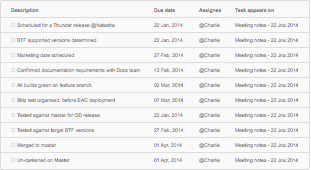Provide reliable connectivity of sufficient bandwidth between all LSST Observatory sites (Base, Archive, Headquarters, Data Access Center, Satellite Processing, and Camera sites) to meet operational requirements.
Network Engineering Team
Per the LSST Network Operations and Management Plan, the overall architecture, engineering, testing, operations and maintenance of the LSST Networks are assigned to the Network Engineering Team (NET) under the direction of the LSST Network Architects and LSST Management. The NET is formed of project/observatory and network provider technical staff. The current members of the NET are:
Members:
Albert Astudillo REUNA
Jeronimo Bezerra FIU/AmLight
Guests
Network Engineering and Testing Mailing List
The LSST networks are being engineered and tested via a distributed team with representatives from the LSST project, as well as the sub-award partners providing networks, and their subcontractors. In order to facilitate communications among this team, a mailing list has been created and all people working on LSST Networks should subscribe to this list:
LSST-End-To-End mailing list
The Network Engineering Team is a subset of this list, and has a dedicated NET list:
Network Engineering Team Meetings
The NET meets monthly at 0800 PT in an online meeting on Blue Jeans Meeting ID: (varies with meeting, see meeting page.
Past meeting notes are linked below.
Specifications and Design Documents
Note: due to historical reasons, access to the baseline versions of linked documents below requires an LSST login to get into docushare. The NET will keep the most current baselined versions linked.
Data Management System-level network specifications (extracted from LSE-61 Data Management Subsystem Requirements)
180 days MTBF/year
48 hours MTTR/year
Base to Archive nightly data volume (science images and meta-data): 15TB
Amount of time available to transfer data from Mountain to Base to Archive:
Crosstalk-corrected images for Alert Production: 6 seconds to move (between 2.6 - 12.4 Gbytes depending on compression)
Raw images: 24 hours
Note, there is also Observatory Control System and other operational data transferred at night, and there is daytime engineering and calibration traffic potentially at the same volume. Finally, there is periodic data transfer from the Archive to the Base, primarily as a result of annual Data Release Processing. All the data flows and allocated bandwidths are defined in the following documents.
A grouping of this traffic for purposes of network design, QoS, prioritization etc. is on the LSST Network Traffic Types.
A bandwidth allocation by link of this traffic for purposes of network design, QoS, prioritization etc. is on the LSST Bandwidth Allocation.
The LSST Long-Haul Networks are specified in LSE-78 Rubin Observatory Network Design and LSE-479 Rubin Observatory Networks Technical Document.
The budgeted cost and schedule of deployment of links and bandwidth, and their utilization is documented in LDM-142 Network Sizing Model
The requirements for the Summit Network are in LTS-577 Summit Network Specification
In addition to the top-level documents above, there are documents describing how the LSST Networks are to be tested, verified, and managed:
The LSST Network End-to-End Test Plan defines the plan for development testing and monitoring the LSST networks.
The Vera C. Rubin Network Verification Baseline defines the plan for formal verification of the LSST Networks
Rubin Observatory Network Pre-Verification Review Report is the report from the panel from the June 2020 review.
The LSST Observatory Network Verification Plan defines plan for formal verification of the LSST networks. OBSOLETE, SUPERCEDED BY LDM-732 and JIRA LVV Project
The LSST Observatory Network Verification Matrix defines requirements and methods for formal verification of the LSST networks. OBSOLETE, SUPERCEDED BY LDM-732 and JIRA LVV Project
The LSST Network Operations and Management Plan defines the plan for operating and maintaining the LSST networks as a single integrated process.
SLAC US Data Facility Networks (ppt, pdf)
ESnet - Europe Networks (pdf)
Quick Display Action Items (Incomplete)

Quick Display Action Items (Complete)
